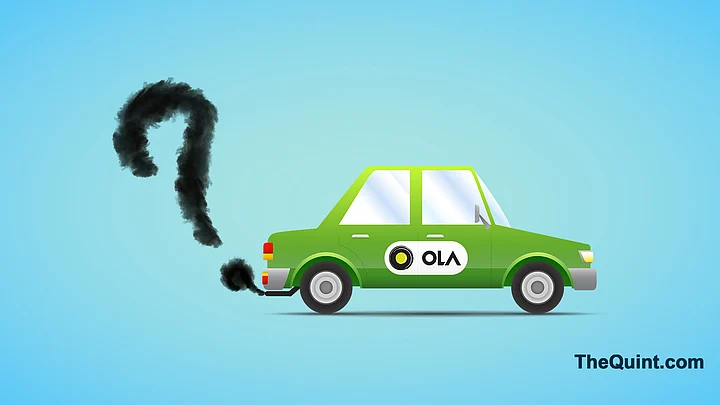Every day, almost two hundred million vehicles in India cough out fumes from their exhaust pipes. These fumes snake their way into the atmosphere, where they trap heat and exacerbate global warming.
Globally, cars contribute to 15 percent of total carbon emissions. So, reducing vehicular emissions would make a significant difference in addressing global warming. And Ola claims they are doing just that.
In a report released this week, Ola claimed to have taken 37 lakh vehicles off India’s roads in the last five months through its Ola Share platform, where riders can share a cab with other commuters. That’s 48,93,432 kilograms of carbon emissions saved, according to the company’s calculations.
At the city level, the report claimed that 9 lakh vehicles were taken off Delhi’s roads, 3 lakh in Mumbai and 1 lakh in Kolkata. In terms of carbon emissions, that amounts to 12,90,636 kg in Delhi, 7,05,636 in Mumbai and 1,70,580 in Kolkata.
At Ola, our mission is to build mobility for a billion people, and I am excited that growing adoption of shared mobility solutions like Ola Share by eco-friendly citizens of India, will form a large part of this while caring for the environment.Raghuvesh Sarup, Head of Categories & CMO, Ola
But calculating carbon emissions saved is not a simple process. For Ola to come up with these numbers, they have to rely on assumptions about commuters that use their service.
Mostly, it means that Ola is assuming that a certain number of their commuters have their own cars, and that they aren’t using their cars because they are using the share feature.
The problem is, Ola has no way of knowing the number of its commuters who own private vehicles, because that’s not part of the information users give when they download the app. So that makes their calculation somewhat problematic.
Ola has not given further details about how they came up with their statistics.
Uber made similar claims last week, saying its UberPOOL feature has cut down on the number of kilometres driven, saving 798 metric tonnes of carbon dioxide. This number is easier to quantify, though, since the company has data on how many kilometres its cabs travel.
According to Uber, more than 50,000 riders use the share feature in Delhi and Bengaluru.
While it’s true that car pooling cuts down on emissions, it’s not a number that’s easy to quantify. And there are more effective ways of saving emissions, like taking the metro, or opting for electric vehicles (they’re not affordable yet, but they will be).
Ola Share may well reduce emissions, but their claims that they cut 48,93,432 kilograms of carbon can’t be taken at face value.
Ola has sent their company statement to The Quint. This is their statement, which we are publishing unedited:
The assumption that we have used to arrive at this data are quite conservative. Given the popularity and scale of operations of Ola Share and Ola Shuttle, the number of cars taken off the road, volume of fuel and quantity of carbon emissions saved could be far higher. Ola Share is in fact one of the most preferred categories on the Ola platform, especially during the peak hours. Also, over the last few days, several users have taken to Twitter to share their individual contribution towards a greener city that was shared with them.
(At The Quint, we question everything. Play an active role in shaping our journalism by becoming a member today.)
